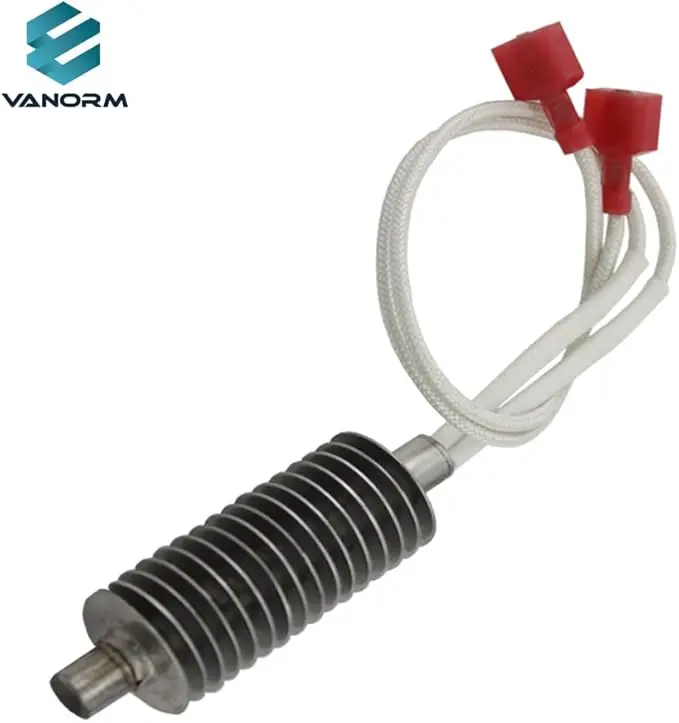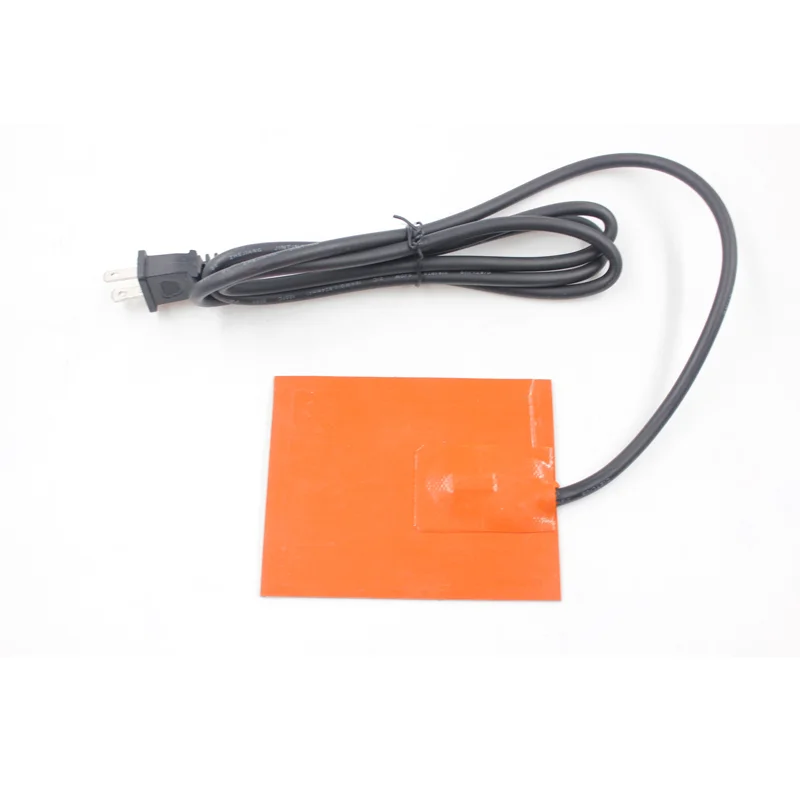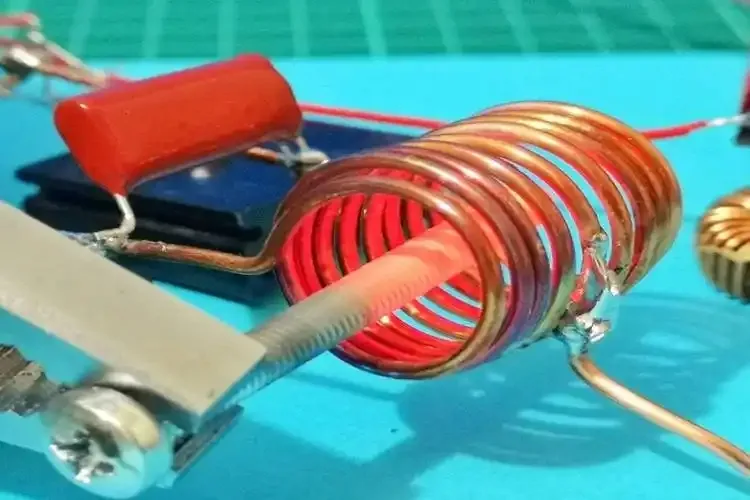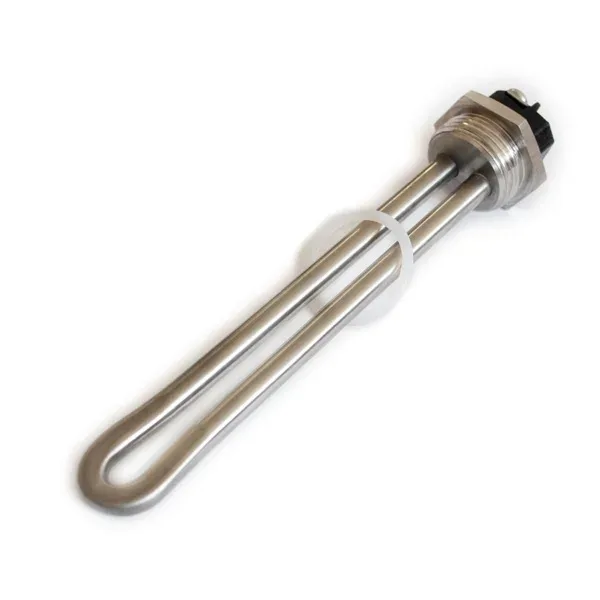Introduction to Electric Heating Elements
Electric heating elements are crucial components utilized in various applications, ranging from residential heating systems to industrial processes. These elements convert electrical energy into heat, enabling temperature regulation in diverse environments. They are pivotal in ensuring comfort in homes, efficiency in manufacturing, and performance in numerous electronic devices. The principle of electric heating is fundamentally based on Joule’s law, where electrical current passing through a conductor generates heat due to resistance. This phenomenon forms the basis for electric heating elements.

The significance of electric heating elements can be seen in their widespread use in domestic appliances, such as water heaters, ovens, and heating pads. In the industrial sector, they play an essential role in processes like metalworking, food preparation, and chemical manufacturing, where precise temperature control is vital. The ability of these elements to provide instant and adjustable heating makes them desirable for many applications, allowing for increased energy efficiency and user convenience.
Furthermore, electric heating elements come in various forms, including resistive heating elements, radiant heaters, and induction heaters, each tailored for specific tasks and contexts. Understanding the different types of electric heating elements is essential for selecting the most suitable one for a particular application, ensuring optimal performance and energy consumption. This overview will serve as a foundation for exploring the three main types of heating elements in detail, examining their distinct characteristics and uses in various settings. By gaining insights into electric heating technology, users can make informed decisions that enhance efficiency and effectiveness in their heating solutions.
Tip 1: Resistive Heating Elements
Resistive heating elements are vital components utilized in various heating applications. These elements function by converting electrical energy into heat through the principle of resistance. When an electric current passes through a resistive material, it encounters opposition, resulting in the generation of heat. This heat is then used for various purposes, ranging from heating water to maintaining temperature in different industrial processes.
Common materials used for resistive heating elements include nichrome wire, which is an alloy of nickel and chromium. Nichrome is favored due to its high melting point, excellent oxidation resistance, and ability to withstand high temperatures without deteriorating. Other materials, such as copper and aluminum, may also be used in certain applications, though they often have limitations regarding temperature resistance and durability.
Resistive heating elements find their applications in numerous devices and systems, including electric stoves, toasters, industrial ovens, and heating blankets. The simplicity of their design and ease of installation make them appealing for both consumer and industrial products. Additionally, they generally offer a fast response time, quickly reaching the desired temperature upon application of electrical power. However, these elements tend to be less energy-efficient at higher temperatures, leading to higher operational costs in some scenarios.
Despite their advantages, resistive heating elements also come with drawbacks. They often produce heat unevenly, which can result in hot spots and potential damage to sensitive materials. Furthermore, the lifespan of a resistive heating element can be limited, as continuous exposure to high temperatures may lead to degradation and failure over time. Understanding the functionality, benefits, and limitations of resistive heating elements is crucial for anyone considering their use in heating applications.

Tip 2: Infrared Heating Elements
Infrared heating elements utilize the principle of infrared radiation to produce heat, a process that involves the emission of energy in the form of electromagnetic waves. Unlike conventional heating methods that rely on direct contact or convection, infrared heaters transfer heat directly to objects and people within their vicinity. This process is efficient as it minimizes energy loss, allowing for quick heating and maintaining a comfortable environment with less energy consumption.
The functioning of infrared heating elements can be broken down into two key components: the heating source and the delivery mechanism. The source is typically a filament or ceramic that emits infrared radiation when electrified. This radiation travels through the air, heating surfaces and objects directly. As the surfaces absorb this energy, they, in turn, radiate heat, facilitating an even distribution throughout the space. This direct heating method enhances efficiency and ensures that warmth is felt almost instantaneously.
When comparing infrared heating elements to other types of heaters such as convection or resistance units, it becomes evident that infrared systems tend to consume less energy for the same heating output. Their efficiency makes them particularly suitable for various applications, ranging from residential heating to industrial processing. Infrared heating is commonly found in food warming applications, where quick and localized heat is essential for maintaining the quality of dishes without drying them out.
Additionally, infrared heating elements are popular in industrial processes, where they facilitate rapid curing and drying of materials. The ability to heat surfaces directly allows for precise temperature control, which is crucial in manufacturing environments. The benefits of infrared heating systems extend beyond efficiency; their low maintenance requirements and longevity make them a valuable investment in both domestic and commercial settings.

Tip 3: Induction Heating Elements
Induction heating elements represent a significant advancement in cooking technology, utilizing the principle of electromagnetic induction to generate heat. Unlike traditional cooking methods that rely on direct flame or electric resistance, induction cooking works by inducing an electric current in a ferrous (magnetic) cookware placed on the cooktop. This process creates a magnetic field that directly heats the pot or pan, producing rapid temperature changes for efficient cooking.
The technology behind induction heating focuses on the efficiency and speed of heat generation. When a ferromagnetic container is positioned on the induction coil, the coil generates alternating magnetic fields that penetrate the cookware, and the resistance of the cookware material converts these magnetic fields into heat. This direct transfer of energy contrasts with radiant heating, where heat is first produced by a burner before being transferred to the cookware, thereby minimizing wasted energy and reducing cooking time.
Safety features are paramount in induction cooking. Since the heat is generated directly within the cookware, the cooktop remains relatively cool to the touch, reducing the risk of burns. Most induction cooktops are equipped with automatic shut-off mechanisms, which deactivate the induction coils when no compatible cookware is detected, further enhancing safety in the kitchen environment.
Moreover, induction heating elements offer numerous advantages over traditional heating methods. They are known for their energy efficiency, as they can heat cookware quicker and maintain precise temperature settings more effectively. The rapid heating and cooling capabilities allow for better control over the cooking process, enabling chefs to execute various culinary techniques with more finesse. Overall, the adoption of induction heating elements signifies a modern approach to cooking, prioritizing speed, efficiency, and safety.

Comparison of the Three Types
When considering electric heating elements, it is essential to evaluate the three main types: resistive, infrared, and induction heating elements. Each type has distinct characteristics that cater to various needs and applications. This comparative analysis will focus on efficiency, heating time, application areas, and user preferences.
Resistive heating elements are the most commonly used type and work by passing an electric current through a resistive material, which generates heat. They are widely recognized for their simplicity and cost-effectiveness. The efficiency of these elements can vary, but they often convert nearly all electrical energy into heat. However, they can take time to reach the desired temperature, which may not suit all users. These heating elements are ideal for applications such as space heating and water heaters.
In contrast, infrared heating elements utilize infrared radiation to directly heat objects and surfaces rather than the air surrounding them. This method allows for a faster heating response, making infrared heaters particularly suitable for environments where immediate warmth is required. They are commonly used in industrial curing processes or outdoor heating solutions. Moreover, infrared heating tends to be more energy-efficient in certain situations, as it minimizes heat loss, particularly in open spaces. However, they may require supplemental heating sources in colder climates.
Induction heating elements operate on a different principle by using electromagnetic fields to directly heat conductive materials, such as metal. This method provides rapid heating, making it an excellent choice for applications such as cooking. Induction heating is typically more efficient than resistive heating, as it minimizes energy loss. Nonetheless, the need for compatible cookware can be a drawback for some users, particularly in home cooking scenarios.
Ultimately, the choice among these electric heating elements hinges on the specific application and user preferences, such as heating speed and energy efficiency. Assessing these factors will aid consumers in selecting the most appropriate heating solution for their individual requirements.
Applications of Electric Heating Elements
Electric heating elements play a crucial role in a vast array of applications across different sectors, demonstrating significant versatility and efficiency. In residential settings, electric heating elements are primarily utilized in heating systems, such as baseboard heaters, radiant floor heating, and electric furnaces. These systems provide comfortable and consistent temperature control, allowing homeowners to maintain a warm and inviting environment during colder months. Likewise, kitchen appliances, including electric stoves, ovens, and toasters, rely on these elements to deliver precise heating required for cooking and food preparation. The reliability of electric heating elements ensures optimal performance, contributing to superior culinary results.
In commercial settings, electric heating elements are integral to a variety of appliances and systems that enhance operational efficiency. For instance, in the food service industry, commercial cooking equipment such as grills, fryers, and ovens depend heavily on electric heating elements to provide even and controlled heating. These elements ensure that food is prepared safely and conveniently, meeting strict health and safety standards. Electric heating is also a critical component in drying and heating applications prevalent in manufacturing processes, ensuring products meet desired specifications before reaching the consumer market.
In the industrial sector, electric heating elements are employed in processes requiring precise temperature control, such as in chemical processing, metal treatment, and plastic molding. These elements facilitate efficient heat transfer, enabling industries to manage thermal processes with accuracy and reliability. Various types of electric heating elements, including tubular, strip, and cartridge heaters, cater to specific needs based on the application at hand. Their adaptability and ability to withstand demanding conditions make them indispensable across numerous industrial processes.
Thus, electric heating elements show their importance across residential, commercial, and industrial applications, fulfilling a wide range of heating requirements with efficiency and precision.
Advantages and Disadvantages of Electric Heating Elements
Electric heating elements are widely utilized in residential and commercial heating solutions due to their distinct advantages. One of the primary benefits is their efficiency. Electric heating elements convert nearly all the electrical energy they consume into heat, making them highly effective for immediate heating. Additionally, they generally have lower initial costs compared to other heating systems, such as gas or oil-based systems. This cost efficiency can be attractive for consumers seeking reasonable upfront expenses.
Installation requirements also contribute to the appeal of electric heating elements. Most systems are straightforward to install and can often be done without major modifications to the building structure. This ease of installation can save both time and money during setup, allowing for quicker access to heat. Moreover, electric heating elements are considered safer than various alternatives, as they do not involve combustion processes associated with a risk of carbon monoxide exposure.
However, there are several notable disadvantages that must be considered. One significant drawback is the operational cost, which can fluctuate based on electricity prices in different regions. In some areas, the cost to run electric heating elements may be more substantial compared to gas heating solutions. Additionally, while electric heating elements provide efficient heating, they can lead to higher electricity consumption, particularly in larger spaces or during extended use, thus affecting overall energy expenditure.
Another concern involves safety considerations. Though generally safe, electric heating elements can pose risks if not properly maintained or if faulty. Regular inspections and adherence to manufacturer guidelines are essential to mitigate potential hazards. As such, understanding both the advantages and disadvantages of electric heating elements can assist consumers in evaluating their specific heating needs while making informed decisions about the best solutions available.
Future Trends in Electric Heating Technology
The realm of electric heating technology is undergoing significant transformations driven by innovation and the evolving energy landscape. One of the most notable trends in this sector is the continued advancement in materials used for electric heating elements. Enhanced materials, such as carbon nanotubes and advanced ceramics, are being researched and developed to improve thermal efficiency and durability. These materials not only enhance performance but also promise greater energy efficiency, which is a critical consideration in today’s energy-conscious world.
Another key trend is the increasing integration of smart technology within electric heating solutions. Smart heating systems enable users to control temperature settings through mobile applications or smart home devices, allowing for more streamlined operations and improved energy management. These systems can learn user preferences over time, optimizing heating schedules based on real-time data. By utilizing smart sensors, these technologies can ensure that energy is consumed only when necessary, further enhancing efficiency and reducing wastage.
Sustainability is also shaping the trajectory of electric heating technologies. Manufacturers are now focusing on solutions that not only meet user needs but also align with environmental goals. This includes the creation of electric heating elements that minimize carbon footprints, utilize renewable energy sources, and incorporate eco-friendly materials. This shift is prompting a move away from traditional methods which may not comply with contemporary sustainability standards. As energy efficiency becomes increasingly vital, electric heating solutions will likely incorporate technologies that enable integration with renewable energy systems, such as solar or wind energy.
In summary, the future of electric heating technology appears promising with advancements in material sciences, the rise of smart technologies, and a strong emphasis on sustainability. As these trends continue to evolve, they will play a crucial role in redefining how electric heating systems are designed and operated, ultimately leading to more efficient and environmentally friendly solutions for consumers and industries alike.
Conclusion
In concluding our exploration of electric heating elements, it is crucial to underscore the significance of understanding the three main types: resistance, radiant, and induction heating elements. Each type presents unique features and benefits that cater to various applications, whether in industrial settings or residential environments. Resistance heating elements are widely recognized for their simplicity and effectiveness, making them a popular choice for standard heating applications. Radiant heating elements, distinguished by their ability to heat surfaces directly, offer efficient warmth and are often utilized in specific installations, such as underfloor heating. Lastly, induction heating elements exemplify innovation and efficiency, particularly in cooking applications, due to their rapid and controlled heat generation.
As we navigate the intricacies of heating technologies, recognizing how these electric heating elements work and their respective advantages assists individuals and businesses in making informed decisions. The choice of heating element significantly impacts energy efficiency, safety, and overall operational costs. Therefore, it is advisable for readers to conduct thorough research when selecting heating solutions tailored to their needs.
Additionally, understanding these electric heating elements not only enhances practical knowledge but also emphasizes the need for advancements in energy efficiency and sustainability. Engaging with further resources and expert guidance can deepen comprehension of modern heating technologies, optimally aligning them with evolving requirements. Exploring options beyond the basic electric heating elements may reveal alternative solutions that further enhance energy conservation and performance. Ultimately, an informed approach can lead to improved overall satisfaction and effectiveness in heating applications.

